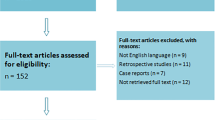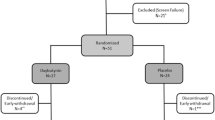Abstract
Calcium channel antagonists are commonly used to treat neuropathic pain. Their analgesic effects rely on inhibiting long-term potentiation, and neurotransmitters release in the spinal cord. Store-operated Ca2+channels (SOCCs) are highly Ca2+-selective cation channels broadly expressed in non-excitable cells and some excitable cells. Recent studies have shown that the potent inhibitor of SOCCs, YM-58483, has analgesic effects on neuropathic pain, but its mechanism is unclear. This experiment performed on spinal nerve ligation (SNL)-induced neuropathic pain model in rats tries to explore the mechanism, whereby YM-58483 attenuates neuropathic pain. The left L5 was ligated to produce the SNL neuropathic pain model in male Sprague–Dawley rats. The withdrawal threshold of rats was measured by the up–down method and Hargreaves’ method before and after intrathecal administration of YM-58483 and vehicle. The SOCCs in the spinal dorsal horn were located by immunofluorescence. The expression of phosphorylated ERK and phosphorylated CREB, CD11b, and GFAP proteins in spinal level was tested by Western blot, while the release of proinflammatory cytokines (IL-1β, TNF-α, PGE2) was measured by enzyme-linked immunosorbent assay (ELISA). Intrathecal YM-58483 at the concentration of 300 μM (1.5 nmol) and 1000 μM (10 nmol) produced a significant central analgesic effect on the SNL rats, compared with control + vehicle (n = 7, P < 0.001). However, both could not prevent the development of neuropathic pain, compared with normal + saline (P < 0.001). Immunofluorescent staining revealed that Orai1 and STIM1 (the two key components of SOCCs) were located in the spinal dorsal horn neurons. Western blot showed that YM-58483 could decrease the levels of P-ERK and P-CREB (n = 10, #P < 0.05), without affecting the expression of CD11b and GFAP (n = 10, #P > 0.05). YM-58483 also inhibited the release of spinal cord IL-1β, TNF-α, and PGE2, compared with control + vehicle (n = 5, #P < 0.001). The analgesic mechanism of YM-58483 may be via inhibiting central ERK/CREB signaling in the neurons and decreasing central IL-1β, TNF-α, and PGE2 release to reduce neuronal excitability in the spinal dorsal horn of the SNL rats.




Similar content being viewed by others
References
Basbaum AI, Bautista DM, Scherrer G, Julius D (2009) Cellular and molecular mechanisms of pain. Cell 139(2):267–284. doi:10.1016/j.cell.2009.09.028
Calvo M, Dawes JM, Bennett DL (2012) The role of the immune system in the generation of neuropathic pain. Lancet Neurol 11(7):629–642. doi:10.1016/S1474-4422(12)70134-5
Carlton SM, Lekan HA, Kim SH, Chung JM (1994) Behavioral manifestations of an experimental model for peripheral neuropathy produced by spinal nerve ligation in the primate. Pain 56(2):155–166
Chaplan SR, Bach FW, Pogrel JW, Chung JM, Yaksh TL (1994) Quantitative assessment of tactile allodynia in the rat paw. J Neurosci Methods 53(1):55–63
Cohen SP, Mao J (2014) Neuropathic pain: mechanisms and their clinical implications. BMJ 348:f7656. doi:10.1136/bmj.f7656
DeLeo JA, Colburn RW, Rickman AJ, Yeager MP (1997) Intrathecal catheterization alone induces neuroimmune activation in the rat. Eur J Pain 1(2):115–122
Gao R, Gao X, Xia J, Tian Y, Barrett JE, Dai Y, Hu H (2013) Potent analgesic effects of a store-operated calcium channel inhibitor. Pain 154(10):2034–2044. doi:10.1016/j.pain.2013.06.017
Gao XH, Gao R, Tian YZ, McGonigle P, Barrett JE, Dai Y, Hu H (2015) A store-operated calcium channel inhibitor attenuates collagen-induced arthritis. Br J Pharmacol 172(12):2991–3002. doi:10.1111/bph.13104
Gemes G, Bangaru ML, Wu HE, Tang Q, Weihrauch D, Koopmeiners AS, Cruikshank JM, Kwok WM, Hogan QH (2011) Store-operated Ca2+ entry in sensory neurons: functional role and the effect of painful nerve injury. J Neurosci 31(10):3536–3549. doi:10.1523/JNEUROSCI.5053-10.2011
Gerner P, Nakamura T, Quan CF, Anthony DC, Wang GK (2000) Spinal tonicaine: potency and differential blockade of sensory and motor functions. Anesthesiology 92(5):1350–1360
Haanpaa M, Attal N, Backonja M, Baron R, Bennett M, Bouhassira D, Cruccu G, Hansson P, Haythornthwaite JA, Iannetti GD, Jensen TS, Kauppila T, Nurmikko TJ, Rice AS, Rowbotham M, Serra J, Sommer C, Smith BH, Treede RD (2011) NeuPSIG guidelines on neuropathic pain assessment. Pain 152(1):14–27. doi:10.1016/j.pain.2010.07.031
Hagenston AM, Simonetti M (2014) Neuronal calcium signaling in chronic pain. Cell Tissue Res 357(2):407–426. doi:10.1007/s00441-014-1942-5
Hargreaves K, Dubner R, Brown F, Flores C, Joris J (1988) A new and sensitive method for measuring thermal nociception in cutaneous hyperalgesia. Pain 32(1):77–88
Heo DK, Lim HM, Nam JH, Lee MG, Kim JY (2015) Regulation of phagocytosis and cytokine secretion by store-operated calcium entry in primary isolated murine microglia. Cell Signal 27(1):177–186. doi:10.1016/j.cellsig.2014.11.003
Ikeda M, Tsuno S, Sugiyama T, Hashimoto A, Yamoto K, Takeuchi K, Kishi H, Mizuguchi H, Kohsaka S, Yoshioka T (2013) Ca(2+) spiking activity caused by the activation of store-operated Ca(2+) channels mediates TNF-alpha release from microglial cells under chronic purinergic stimulation. Biochim Biophys Acta 1833(12):2573–2585. doi:10.1016/j.bbamcr.2013.06.022
Ji RR, Berta T, Nedergaard M (2013) Glia and pain: is chronic pain a gliopathy? Pain 154(Suppl 1):S10–S28. doi:10.1016/j.pain.2013.06.022
Kuner R (2010) Central mechanisms of pathological pain. Nat Med 16(11):1258–1266. doi:10.1038/nm.2231
Ma W, Quirion R (2001) Increased phosphorylation of cyclic AMP response element-binding protein (CREB) in the superficial dorsal horn neurons following partial sciatic nerve ligation. Pain 93(3):295–301
Majewski L, Kuznicki J (2015) SOCE in neurons: signaling or just refilling? Biochim Biophys Acta. doi:10.1016/j.bbamcr.2015.01.019
Michaelis M, Nieswandt B, Stegner D, Eilers J, Kraft R (2015) STIM1, STIM2, and Orai1 regulate store-operated calcium entry and purinergic activation of microglia. Glia 63(4):652–663. doi:10.1002/glia.22775
Miletic G, Pankratz MT, Miletic V (2002) Increases in the phosphorylation of cyclic AMP response element binding protein (CREB) and decreases in the content of calcineurin accompany thermal hyperalgesia following chronic constriction injury in rats. Pain 99(3):493–500
Muller MS, Fox R, Schousboe A, Waagepetersen HS, Bak LK (2014) Astrocyte glycogenolysis is triggered by store-operated calcium entry and provides metabolic energy for cellular calcium homeostasis. Glia 62(4):526–534. doi:10.1002/glia.22623
Prakriya M, Feske S, Gwack Y, Srikanth S, Rao A, Hogan PG (2006) Orai1 is an essential pore subunit of the CRAC channel. Nature 443(7108):230–233. doi:10.1038/nature05122
Ramesh G, MacLean AG, Philipp MT (2013) Cytokines and chemokines at the crossroads of neuroinflammation, neurodegeneration, and neuropathic pain. Mediators Inflamm 2013:480739. doi:10.1155/2013/480739
Sandkuhler J (2009) Models and mechanisms of hyperalgesia and allodynia. Physiol Rev 89(2):707–758. doi:10.1152/physrev.00025.2008
Simonetti M, Hagenston AM, Vardeh D, Freitag HE, Mauceri D, Lu J, Satagopam VP, Schneider R, Costigan M, Bading H, Kuner R (2013) Nuclear calcium signaling in spinal neurons drives a genomic program required for persistent inflammatory pain. Neuron 77(1):43–57. doi:10.1016/j.neuron.2012.10.037
Sisignano M, Baron R, Scholich K, Geisslinger G (2014) Mechanism-based treatment for chemotherapy-induced peripheral neuropathic pain. Nat Rev Neurol 10(12):694–707. doi:10.1038/nrneurol.2014.211
Song XS, Cao JL, Xu YB, He JH, Zhang LC, Zeng YM (2005) Activation of ERK/CREB pathway in spinal cord contributes to chronic constrictive injury-induced neuropathic pain in rats. Acta Pharmacol Sin 26(7):789–798. doi:10.1111/j.1745-7254.2005.00123.x
Stathopulos PB, Ikura M (2013) Structural aspects of calcium-release activated calcium channel function. Channels 7(5):344–353. doi:10.4161/chan.26734
Stathopulos PB, Schindl R, Fahrner M, Zheng L, Gasmi-Seabrook GM, Muik M, Romanin C, Ikura M (2013) STIM1/Orai1 coiled-coil interplay in the regulation of store-operated calcium entry. Nat Commun 4:2963. doi:10.1038/ncomms3963
Wang Y, Cheng X, Xu J, Liu Z, Wan Y, Ma D (2011) Anti-hyperalgesic effect of CaMKII inhibitor is associated with downregulation of phosphorylated CREB in rat spinal cord. J Anesth 25(1):87–92. doi:10.1007/s00540-010-1068-1
Xia J, Pan R, Gao X, Meucci O, Hu H (2014) Native store-operated calcium channels are functionally expressed in mouse spinal cord dorsal horn neurons and regulate resting calcium homeostasis. J Physiol 592(Pt 16):3443–3461. doi:10.1113/jphysiol.2014.275065
Zhang SL, Yu Y, Roos J, Kozak JA, Deerinck TJ, Ellisman MH, Stauderman KA, Cahalan MD (2005) STIM1 is a Ca2+ sensor that activates CRAC channels and migrates from the Ca2+ store to the plasma membrane. Nature 437(7060):902–905. doi:10.1038/nature04147
Zhuang ZY, Gerner P, Woolf CJ, Ji RR (2005) ERK is sequentially activated in neurons, microglia, and astrocytes by spinal nerve ligation and contributes to mechanical allodynia in this neuropathic pain model. Pain 114(1–2):149–159. doi:10.1016/j.pain.2004.12.022
Author information
Authors and Affiliations
Corresponding author
Rights and permissions
About this article
Cite this article
Qi, Z., Wang, Y., Zhou, H. et al. The Central Analgesic Mechanism of YM-58483 in Attenuating Neuropathic Pain in Rats. Cell Mol Neurobiol 36, 1035–1043 (2016). https://doi.org/10.1007/s10571-015-0292-5
Received:
Accepted:
Published:
Issue Date:
DOI: https://doi.org/10.1007/s10571-015-0292-5




